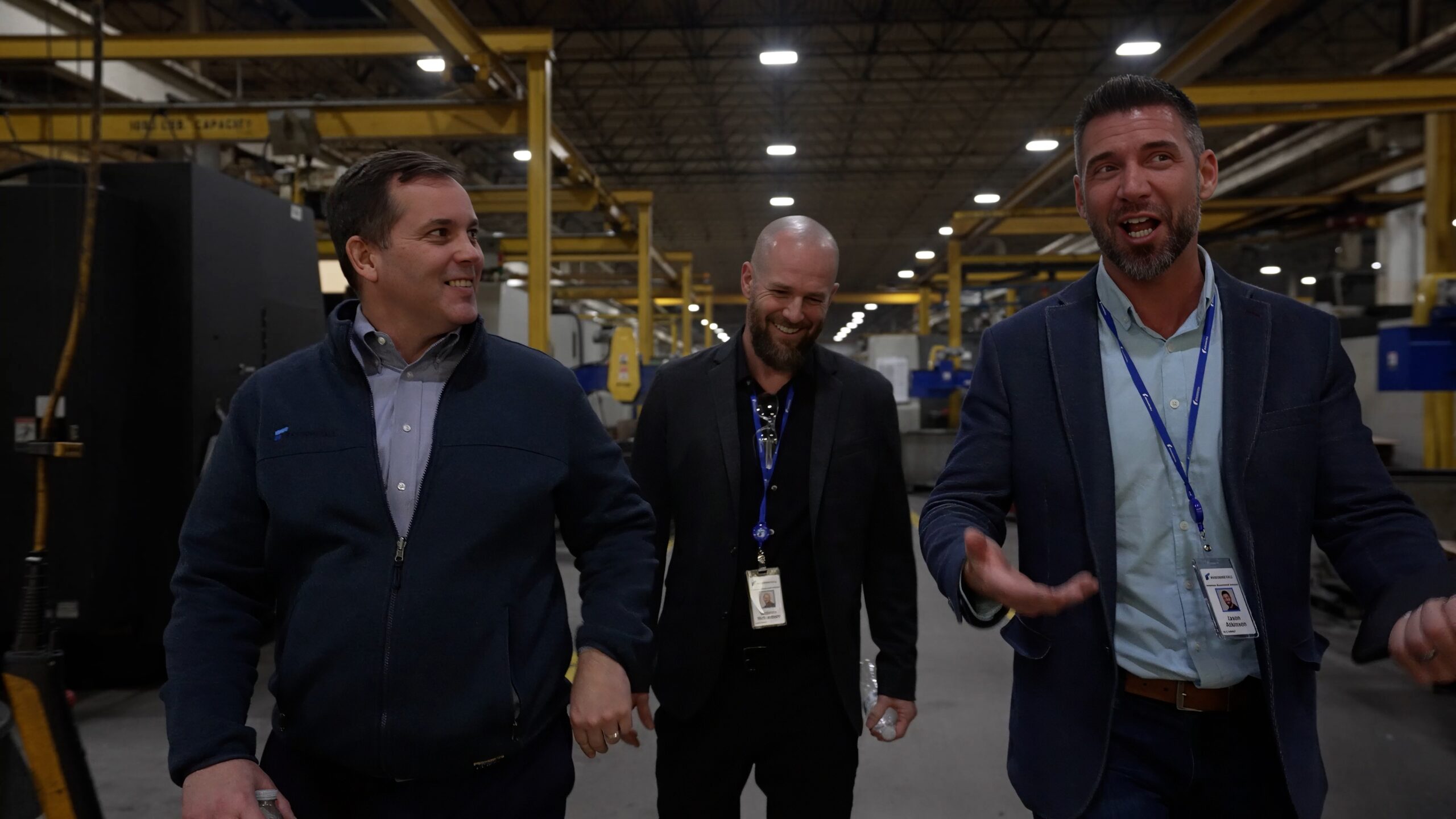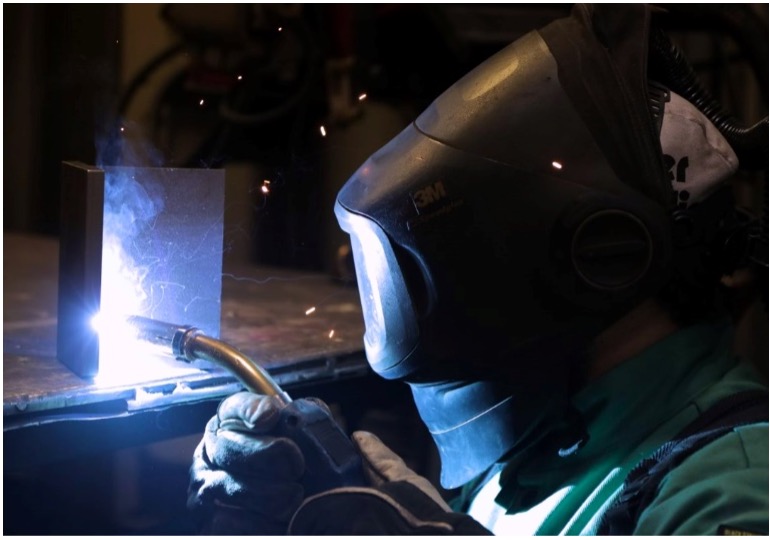For decades, defense programs followed a cautious, government-funded path to development, a model that produced reliable results but often slowed innovation. Complex funding cycles and risk-averse contracting created friction at the very moment technology was accelerating. Today, the U.S. Army is rethinking that approach. Leaders are calling for an industrial base that moves at the speed of Silicon Valley, taking smart risks and investing early to deliver capability when it’s needed most.
At American Rheinmetall, that philosophy isn’t new. In fact, it’s how the company has always operated. “We don’t wait for government R&D dollars to start moving,” said Matt Warnick, CEO of American Rheinmetall. “We invest first because that’s how we get capability to the Soldier faster.”
A Proven Model that Works
For years, the company has been putting its own capital to work, funding turret production lines, developing automotive technology rigs to validate mobility and powertrain systems, and modernizing U.S. manufacturing facilities long before any contract award. This approach reflects a deep belief that private investment can be a force multiplier for modernization. By investing early, American Rheinmetall shortens development timelines, reduces program risk, and delivers capability to Soldiers faster than traditional acquisition models allow.
Globally, Rheinmetall proved this model works with the KF41 Lynx infantry fighting vehicle (IFV) and KF51 Panther main battle tank (MBT)—two next-generation combat vehicles conceived, engineered, and prototyped without government RDT&E funding. By privately financing development from concept through working prototypes, Rheinmetall brought both platforms to market faster and with greater technical maturity than typical government-funded programs. The result was a tangible demonstration that sustained private investment can reduce development risk, accelerate delivery, and create ready-to-produce systems long before formal acquisition milestones. By contrast, the government funded Main Ground Combat System (MGCS) project that was launched in 2017 is hoping to deliver a system by 2040.
Strengthening the U.S. Industrial Footprint
The same self-funded discipline is visible across the company’s U.S. footprint. Before the Army launched the XM30 next-generation combat vehicle competition, American Rheinmetall had already invested more than $40 million in engineering talent and infrastructure to accelerate development and position the company to move quickly once the program began. Its early commitment created a mature technical baseline and a ready U.S. engineering footprint from the start.
In 2024, Rheinmetall invested $950M to acquire Loc Performance Products, a high performing defense manufacturing firm that gave American Rheinmetall an initial manufacturing footprint to rapidly scale up capacity for XM30 and other programs. In 2025 and 2026, American Rheinmetall is investing $31.7 million to expand operations and move into a 168,000-square-foot facility in Auburn Hills, consolidating sites in Troy and Sterling Heights and creating 450 new jobs. The upgraded facility will feature digital machining centers, robotic weld cells, and advanced automation—all of which increase production throughput and reduce lead times for American Rheinmetall’s work on the XM30 combat vehicle program and other critical DoW initiatives.
Beyond its own facilities, American Rheinmetall is investing in the broader industrial base. The company is working directly with Tier-2 and Tier-3 suppliers across Michigan, Ohio, Maine, Virginia, Louisiana, Florida, and other states to expand production capacity and accelerate the adoption of advanced materials. Through new composite R&D partnerships, smaller manufacturers are gaining access to technology, training, and capital that enable them to compete in defense manufacturing for the first time. This not only broadens the U.S. supply chain but strengthens national resilience by creating a deeper, more adaptable network of producers capable of surging to meet defense needs when demand increases.
A Commitment to Modernization
Even after decades of cancellations and scope reductions across major military programs, American Rheinmetall continues to invest in the Army’s modernization vision. It’s putting capital and engineering talent to work ahead of guaranteed returns because it views modernization as a generational mission, not a short-term initiative.
“Modernization should deliver a return on investment for the nation, not just the balance sheet,” said Warnick. “Every dollar we invest flows through American jobs, new supplier entrants, and greater production readiness.”
The company’s IRAD-to-revenue ratio exceeds the U.S. defense industry average, a tangible sign that its commitment is measurable and sustained.
Inside its facilities, American Rheinmetall fuses digital engineering with hands-on manufacturing expertise. Automation and integrated quality controls accelerate production by reducing errors and rework without compromising Tier-1 precision. Engineers use digital twins to model vehicle performance and manufacturing tolerances before production begins, giving teams real-time data to anticipate sustainment needs and adapt designs on the fly. It’s a model of Silicon Valley-style iteration applied to heavy manufacturing to produce shorter prototyping cycles and greater readiness from the first build.
Rheinmetall’s acquisition of Loc Performance Products expanded American Rheinmetall’s domestic capacity for tracked-vehicle manufacturing and advanced machining. The acquisition added nearly two million square feet of advanced manufacturing space and more than 1,000 skilled employees with deep expertise in track, suspension, and heavy fabrication for U.S. combat vehicles. Warnick described the acquisition as “a major step forward in strengthening our ability to deliver critical defense technologies to the U.S. military. It’s a direct investment in American manufacturing capacity and the skilled workforce that powers it.”
A Responsive Industrial Base
Today, more than 1,500 American Rheinmetall employees support the design and production of vehicle systems, munitions, electronic subsystems, and armored structures across the U.S. These capabilities are further strengthened through Team Lynx—American Rheinmetall’s partnership with Textron Systems, Raytheon, L3Harris Technologies, Allison Transmission, and Anduril Industries—working together to develop the XM30 program and define the next generation of U.S. combat platforms.
“This is what a responsive industrial base looks like, one that’s ready before the requirement arrives,” Warnick said. “Stable, predictable programs, like those we’ve demonstrated in the U.S. and abroad, amplify modernization and unlock private-sector capital that flows directly into American factories, supplier networks, and skilled jobs.”
Warnick added that when government and industry move in step, innovation scales faster and capability reaches Soldiers when it’s needed most.
“As the Department of War looks to accelerate acquisition reform, American Rheinmetall stands as proof that when private capital leads, modernization doesn’t have to wait for appropriations,” Warnick said. “We’re putting capital to work here in the U.S., building capability before it’s required, and proving that private investment can move modernization forward.”

















